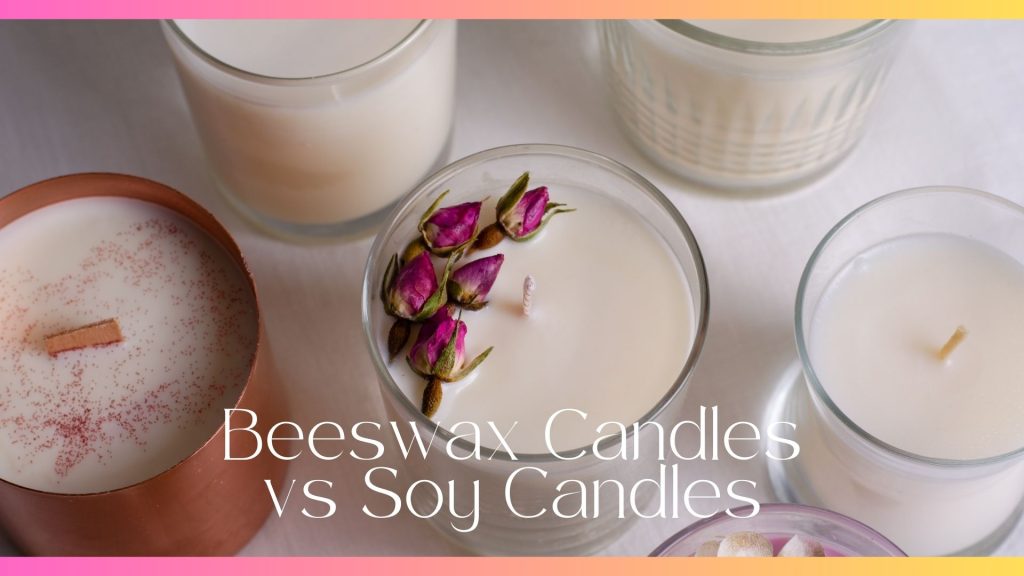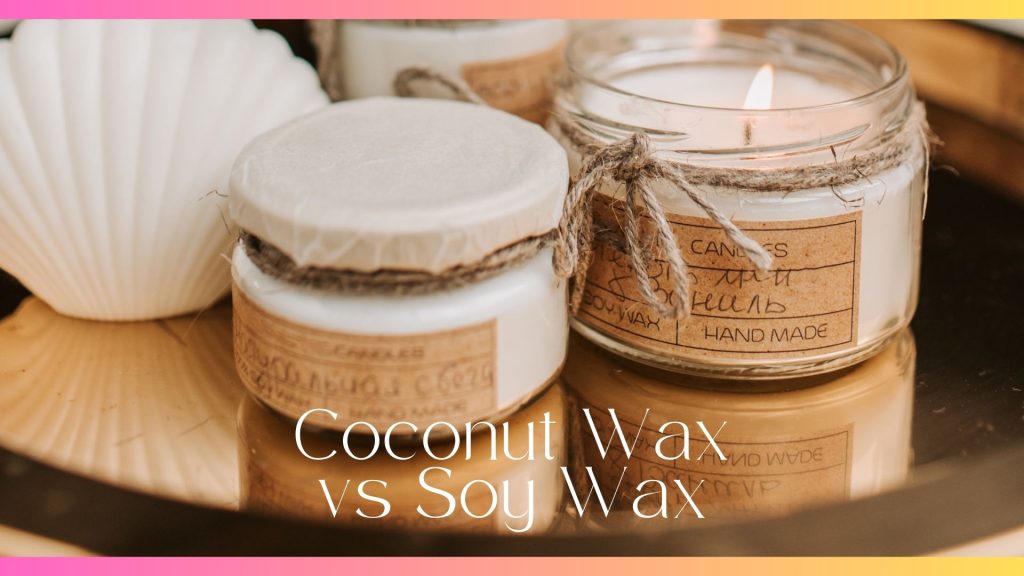Looking for a guide on how to make strong scented candles? Planning to start a candle making business in the near future or create candles for yourself? Here’s 9 things you should know!
While candle making sounds like an easy process anyone can go through, not everyone is able to master it. Creating candles that are full of aroma not only requires use of quality ingredients, it also needs great attention to detail and precise candle making techniques every step of the way.
In this article, I’ll be exploring 9 things you’ll need to consider during candle making to successfully make strong scented candles that are suitable for sale.
Disclaimer: This post may contain affiliate links. This means I may earn a small commission (at no cost to you) if you sign up for a program or make a purchase using my link!
Related Posts:
- 7 Things To Compare Coconut Wax vs Soy Wax
- 6 Key Differences Beeswax Candles vs Soy Candles
- 5 Factors To Consider On How Much Fragrance Oil To Add To Soy Wax?
9 Things To Know On How To Make Strong Scented Candles
1. Understanding Type of Fragrance Oil
One of the major ingredients of scented candles is of course the scents itself. You’ll need to first understand the fragrance oils you’re using better and ensure you’re using the right one.
Concentrated fragrance oils are a mix of synthetic or natural aromatic components – and not all are built equal. They come in various strengths, from light to strong, and are designed to disperse scent when heated.
Candle making requires fragrance oils or essential oils that are meant for candles. Do proper research and choose premium fragrance oils known for their potency and longevity. This ensures a strong scent throw and proper even burning throughout.
2. Choosing High-Quality Ingredients
Apart from the fragrance oils, you’ll also need to carefully evaluate the quality of other ingredients used for your candles.
Ensure that you’re using high quality wax that has excellent scent throw capabilities. This is not true for all types of wax and some may resort to blending a few types of waxes. Soy wax, for instance, is highly popular for its ability to hold fragrance well and produce a clean burn – hence, why most candle makers use them!
3. Proper Scent-to-Wax Ratio
For every candle batch that you make, you’ll have to stick to a proper scent-to-wax ratio. This means that there is a fixed percentage of fragrance oil you’ll have to pour in for a given amount of wax.
The recommended fragrance load guidelines provided by suppliers typically range from 6% to 12% of the total wax weight. While it may be tempting to add excessive amounts of fragrance for a stronger scent, this can lead to performance issues such as poor burn quality and excessive soot.
Identify your ideal ratio by making a few different batches of candles and test how they burn yourself. Are you achieving your desired scent throw? By striking the right balance between wax and fragrance oil, you’ll definitely achieve a robust fragrance in candles.
4. The Right Time To Mix
It’s always important that you remove the wax from the heat source and allow it to cool slightly before adding your fragrance oil. Any type of fragrance oil must be added to the wax at the optimal temperature of between 160°F and 185°F (71°C and 85°C).
This helps ensure proper scent dispersion throughout the melted wax. Remember to stir the mix slowly and consistently to avoid introducing air bubbles and prevent the scent from dissipating.
Optimal temperatures may vary with the type of wax used as different kinds of wax have different melting points. As an example, coconut wax has a lower melting point than soy wax and beeswax has a higher melting point than soy wax. The rate at which they cool after being heated will also differ.
5. Choosing the Right Wick
Not many know this, but the wick plays a crucial role in determining a candle’s scent throw. It might also sound like basic science but a candle’s wick influences the rate at which the candle burns and disperses fragrance.
Put aside the type of wick used, you’ll need to select the appropriate wick size for your candle to ensure an even burn (no tunneling) and maximizes scent release. Check out for wick sizing guides online and start to conduct burn tests using different types of wicks with varying sizes.
It will greatly help identify the ideal wick for your candle size and composition!
6. Ingredients That Enhance Scent Throw
There are several advanced techniques that you can explore to enhance the scent throw of candles and ensure a more potent aroma experience. This includes using additives such as vybar or stearic acid that should improve the retention of fragrance in candles.
Both of these additives are safe to use and pretty common as they can amplify the aroma without compromising burn quality. Vybar is a polymer that makes it easier for the wax to hold dye colors and fragrances, without them separating from the mixture. Stearic acid (usually found in soaps and cosmetics) is also used to make candles more opaque and harder, burn longer and retain more fragrance.
Before adding these extra elements, ensure that the wax you’re using does not already contain them. Some may already have these additives to begin with!
7. Testing and Adjustments
Nothing is truly measured unless you test them out. Just like I’ve mentioned above, conducting test burns can be advantageous for a few reasons, including making candles that match your desired scent strength.
Burn them in various settings and environments to gauge their aroma intensity and longevity. If the scent is too faint, consider increasing the fragrance load slightly in subsequent batches. Conversely, if the scent overwhelms or causes irritation, reduce the fragrance load accordingly. Fine-tuning the fragrance-to-wax ratio is a continual process that requires observation and adjustment.
This also depends largely on how you expect your audience to use your products. If you’re certain that your candles are mainly used indoors for smaller spaces, then it is best to conduct tests in similar settings. It is also important that you manage your customers’ expectations by adding these details on where or how your candles perform best.
8. Candle Cooling and Curing
It is not enough that you get your fragrance oils right or add them at the right time. You’ll also need to allow newly made candles (fresh candles) to cool and cure properly before testing their scent strength.
Curing allows the fragrance to really meld with the wax, which should result in a stronger and balanced aroma throughout each burn. Depending on the type of wax used, curing times may vary from a few days to several weeks so you’ll have to be patient!
Some candle makers even wait for two weeks to sell their candle stocks, just to ensure it achieves optimal scent performance and customers are satisfied with their purchase.
9. Proper Candle Care
Just like other home products, candles require proper care and burning practices to maintain the strength of the scent for long.
As a candle maker, it’s best to educate your customers on how to care for your candles. Provide written guidelines on the importance of trimming a candle’s wick (preferably to a quarter-inch before each use) as it should help prevent mushrooming and ensure a clean burn. Also let them know how to properly store candles when unused – typically in a cool, dark place away from direct sunlight or heat sources to preserve their fragrance integrity.
If you’re a consumer or user of your own candles, it’s advisable that you avoid burning candles for extended periods in one sitting as this would also diminish scent potency over time.
Bottom Line
It’s no doubt that crafting strong-scented candles is a blend of both art and science. It requires great attention to detail, lots of experimentation and a real passion for fragrance.
The nine aspects I’ve explained above on how to make strong scented candles is just a mere guideline for you to consider in your journey – and finding what works for you. The best part is, everything can be learned and unlearned!
You decide where you want to go as an aspiring candle maker or a seasoned one. With the right system in place and enough creativity, you should be able to create captivating scented candles that just elevates any space.


